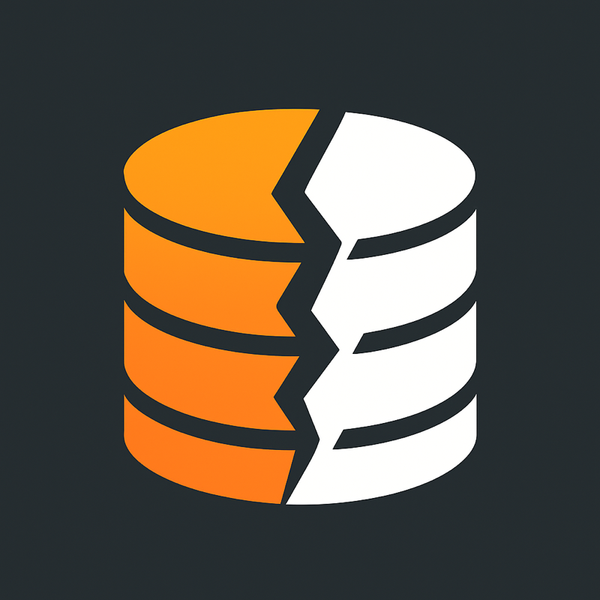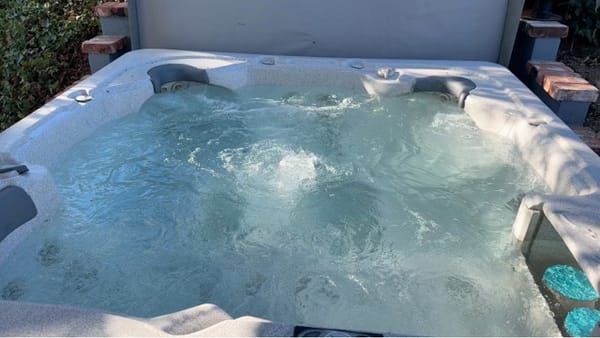The Homelab - Aug 2024 edition
Documenting the building of my homelab and how it's all coming together, August 2024 edition.

I work as an IT Director for a company with about 70 employees and manage the network, servers, cloud infrastructure and all of the desktop support for the organization I'd love to have a place to play and learn.
Obviously downtime is a concern at work and having a test bed to play with is important but outside of work how to I sharpen my skills? For me it's getting into a Homelab, a place where the stakes are just as high but I can't get fired if things break, I'll just have a disappointed wife and upset daughter dealing with my shenanigans.
So what is a homelab any how? For me currently it's the production environment that my house runs on. It consists of a few systems and networking infrastructure and allows me to bend and break things to learn how to fix them. I'll also be building a development/test environment or as most folks would call a REAL homelab where at some point I can break things and my family can still watch tv or use the internet without me messing things up for them. As my network and servers grow so does the ability to run tests and play without messing up "production" by building a test network with test servers and network hardware. Much like my knowledge is growing so is the gear I'm using for testing.
The Servers
My servers consist of 2 Dell Precision i7 laptops (4 core, 8 threads) from 2016 both upgraded to 32gb of ram, 2 SSDs (one of them in the optical slot using this kit, the other in the standard drive slot) and running Unraid on a USB drive to load it into memory. At some point I'll add a 3rd drive to both serves so i have a cache drive. This is mainly for the Docker containers to use and nothing to do with media storage, that's what the NAS boxes are for. Unraid Link
Server 1
This server acts as my workhorse server running many docker containers for various experiments and media acquisition.
Server 2
This server acts as my media server. Running docker I have containers accessing the various file shares on the NAS. Accessing NFS shares from my media storage NAS to be played by Plex or any DLNA devices that want to access the TV, Movies and Music stored on the Media NAS. This server also runs Homebridge, Scrypted and Uptime Kuma for managing my smart home and monitoring the various devices running on the network.
Raspberry Pi
Running on the device is Home Assistant running on a RaspberryPi 4 with HA OS so everything is managed in Home Assistant.
The Storage
I running 2 older NAS devices one for backup of the computers on the network as well as the laptop servers and another for "media storage". These old chassis have brand new drives in them but the NAS itself are from 2012 and 2016. Inherited from my old workplace and current workplace as we replaced old infrastructure. 16TB in one NAS and 8TB in the other. These NAS have SMB and NFS enabled allowing for other devices on the network to access them as needed.
The Network
This part is a more recent development. I was running a pair of Asus WiFi 6 routers with a few wired old Netgear switches and have recently moved to Ubiquiti. Playing with VLANs at home and doing more of the stuff I do at work but at home using more small business grade hardware.
UniFi Cloud Key - Acts as the NVR for my UniFi Protect cameras.
Link
UniFi Cloud Gateway Ultra - Manages the network and each of my UniFi switches and wireless access points.
Link
UniFi Access Points - My 1700 sq home has 3 wireless access points (office, living room, garage) wired and connected to my PoE switches, giving my home ample coverage despite the 1960s walls with lathe and plaster as well as stucco trying so very hard to block it from penetrating. Kitchen, bathrooms, attached garage firewalls, and outside stucco are Wi-Fi killers. "Old" houses in California weren't made for Wi-Fi. Link - Link
UniFi Switches - 1/2 of my switches are UniFi switches, but I'll slowly get all switches out for UniFi ones so we have 1 pane of glass to manage them with. Link
UniFi Protect - My UniFi cameras manage my front door and around the building cameras, letting me see what is going on and let me see the daily commute of the animals in my neighborhood. What I like about UniFi Protect is I can access it from anywhere, yet it’s all stored locally at home, unlike Ring or other camera products that you have to pay for cloud storage for. Link - Link - Link
What's Next in this Homelab series?
Next I'll be exploring the various docker containers running on each Unraid server, why I'm using them and months from now what changed and what I've replace with different solutions. Documenting my homelab is fun and I hope you get something from it. In the comments let me know what you are using maybe you can inspire me much like I hope I inspire you with this post.




